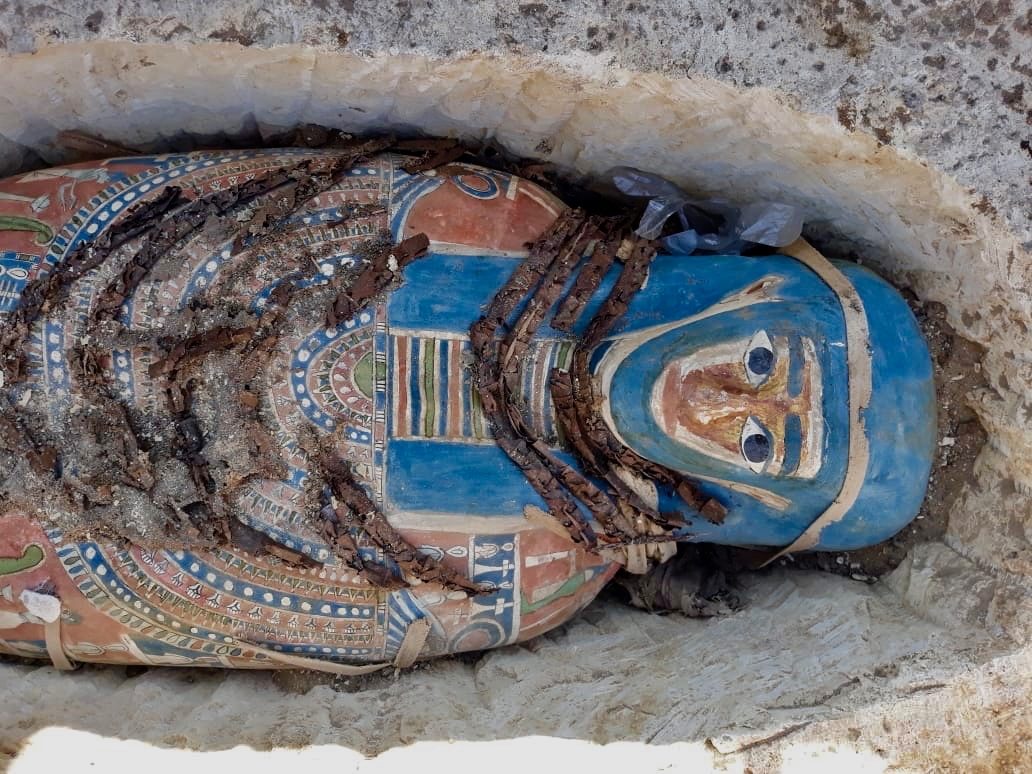
Only three of the mummies were in good condition, according to Mostafa Waziri, secretary-general of Egypt's Supreme Council of Antiquities.
The discovery was made during excavations near the White Pyramid of Amenemhat II, a 12th Dynasty pharaoh who died in the early 19th century B.C. The pyramid, one of several built at the necropolis at Dahshur, has been mined for its white limestone blocks and heavily looted, and little of the monument remains today.
So why were Late Period mummies found near a Middle Kingdom pyramid built some 1,200 years earlier? The pyramid-riddled necropolises of Dahshur and nearby Saqqara served as the elite burial grounds for Memphis, which served as the capital of Lower Egypt during the Old Kingdom and remained powerful during the Middle Kingdom.
By the Late Period, however, the capital had moved to the Nile delta, yet the area around Dahshur and Saqqara remained an important cult center, says Egyptologist and National Geographic explorer Sarah Parcak. "It was still considered a sacred landscape," she says, "so you have a number a very high-ranking elite burials and tombs from the Late Period scattered throughout Dahshur and Saqqara."
Kristin Romey is an editor and writer covering archaeology and paleontology for National Geographic.



Reader Comments
to our Newsletter